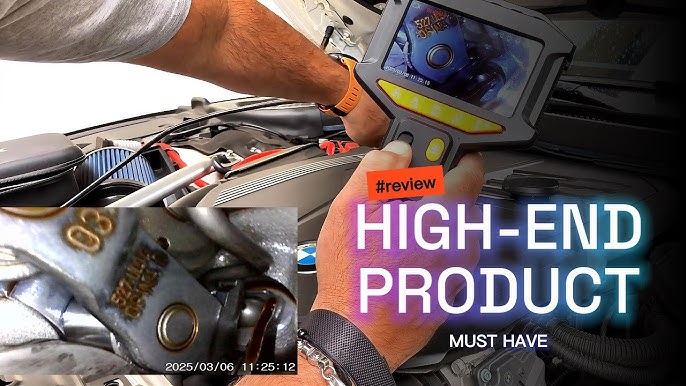In the world of manufacturing and industrial maintenance, efficiency is everything. When equipment malfunctions or inspections are required, the traditional approach often involves extensive disassembly, which leads to costly downtime and increased labor. Fortunately, modern inspection tools like the borescope camera have transformed how professionals inspect, diagnose, and maintain complex systems, without tearing them apart.
What Is a Borescope Camera?
A borescope camera is a slender, flexible, or rigid device equipped with a high-resolution lens and an LED light source. It’s designed to enter confined spaces such as inside engines, pipelines, turbines, gearboxes, or other machinery where visibility is limited. The real-time video feed or captured images provide inspectors with detailed visual insights, making it easier to assess conditions, identify faults, and plan corrective actions.
The Game-Changer in Non-Destructive Testing
Before the widespread use of borescopes, non-destructive testing (NDT) methods were limited. Inspectors often had to rely on external clues, partial disassembly, or trial-and-error techniques to uncover problems. With the introduction of borescope technology, it became possible to inspect internal components of machinery without causing damage or dismantling equipment.
Today, borescope camera innovation is a cornerstone of modern NDT, enabling industries such as aerospace, automotive, power generation, and oil and gas to maintain their assets more effectively. From inspecting turbine blades for cracks to checking weld integrity in pipelines, borescopes provide the critical view needed to make informed decisions.
Time-Saving and Cost-Effective
One of the most valuable benefits of using a borescope camera is its ability to significantly reduce inspection times. A task that might take several hours to complete with full disassembly can often be done in minutes with a borescope. This tool saves time, which directly leads to less downtime and lower running costs for companies that have tight production schedules or rely on expensive equipment.
Additionally, avoiding unnecessary disassembly helps prolong the life of components. Frequent dismantling can contribute to wear and tear, misalignment, or even accidental damage. A borescope inspection allows technicians to pinpoint exactly where intervention is needed, if at all.
Advancements in Borescope Technology
Modern borescope systems have come a long way from early designs. Today’s units often feature:
- Articulating probe tips for better maneuverability in complex geometries
- HD or 4K video capability for crystal-clear imaging
- Wi-Fi connectivity for live streaming and remote diagnostics
- Data storage for archiving and reporting inspections
- Interchangeable lenses to adjust viewing angles and depths
These innovations mean users can not only reach difficult locations but also capture incredibly detailed visuals that aid in preventative maintenance and compliance reporting.
Enhancing Workplace Safety
In many industrial environments, safety is paramount. Using a borescope camera reduces the need for inspectors to enter hazardous spaces or work around live equipment. From a safe distance, inspections can be done without being exposed to heat, dangerous materials, or moving machines.
For example, in power plants or chemical facilities, the ability to perform internal inspections without dismantling pressurized systems is a critical safety improvement. Borescopes help technicians identify problems like corrosion, blockage, or leakage before they escalate into more serious—and potentially dangerous—issues.
Final Thoughts
As industrial equipment grows more complex, the demand for effective, non-invasive inspection methods continues to rise. The borescope camera meets this need with a perfect combination of precision, efficiency, and innovation. Whether you’re monitoring wear in a production line or conducting routine aircraft maintenance, this tool provides clear, accessible insight—right where you need it.
Ultimately, borescope technology allows industries to do what once seemed impossible: explore the inside of tight, critical areas without ever having to open them up.

